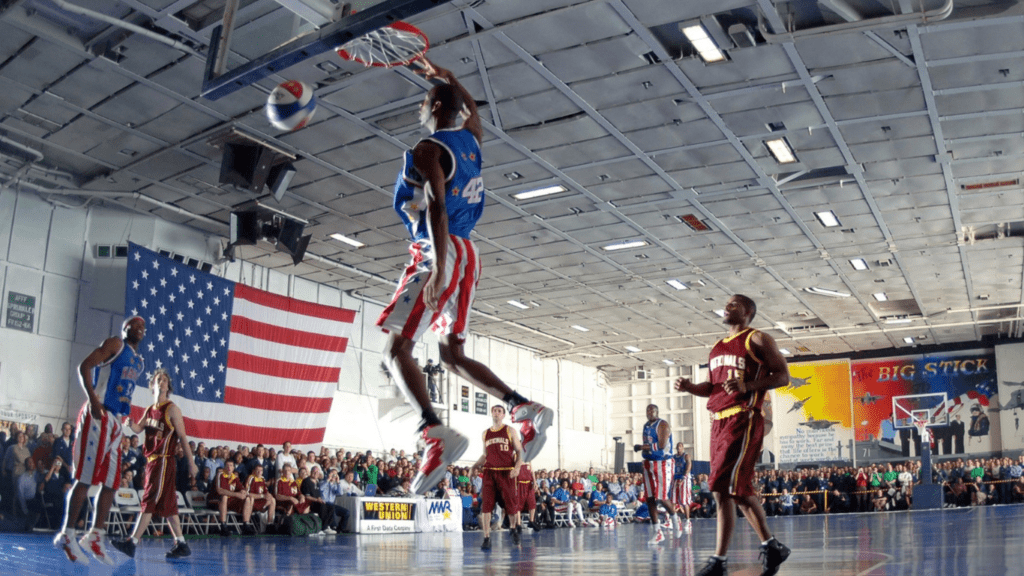Overview of the Trade Season
Trade season in professional sports can be a whirlwind of activity and emotion. Every year, teams meticulously analyze their rosters, evaluate potential improvements, and ultimately decide which players to move. The goal: to strengthen their chances of success in the upcoming season.
Executives weigh numerous factors during this period. Player performance, salary cap implications, long-term strategies, and team chemistry all play a crucial role in deciding trades. These elements often drive negotiations and influence the outcome of transactions.
Fans eagerly follow trade news during this time. With each new deal, speculation builds regarding how these changes could impact league standings. The excitement reaches a fever pitch as deadlines approach, with last-minute deals sometimes redefining the contours of the competition.
Trade season also offers players fresh opportunities. While some athletes find new homes where they can shine, others use trades as a stepping stone to achieve personal goals or revitalize their careers. This dynamic environment keeps both insiders and fans engaged throughout the season.
Trade 1: Blockbuster Deal Overview
This trade sent shockwaves through the sports community, marking a pivotal moment in the season. Teams involved made significant moves to adjust their strategies and improve their prospects.
Teams Involved
The Los Angeles Lakers and Chicago Bulls orchestrated this high-profile trade. Both teams sought to address weaknesses in their rosters, enhancing balance and competitiveness. The Lakers aimed to fortify their defensive lineup, while the Bulls focused on enhancing offensive firepower.
Key Players and Their Impact
- LeBron James joined the Bulls, providing veteran leadership and scoring prowess.
- His transition promises to alter team dynamics, offering fresh opportunities for player development.
- In exchange, Zach LaVine moved to the Lakers, bringing exceptional shooting skills and agility.
- This shift could elevate the Lakers’ offensive gameplay and introduce new strategies.
Reaction from Fans and Experts
Fans expressed mixed emotions, ranging from excitement to skepticism, about the trade’s potential impact on each team’s success. Analysts highlighted the strategic fit for both squads, noting that the moves were bold but necessary for future growth. Sporting news outlets buzzed with debate, dissecting how the trade could redefine each team’s season trajectory.
Trade 2: Controversial Trade Decision
This trade stirred significant debate among fans and analysts alike. The decision to exchange players between the Dallas Mavericks and Boston Celtics raised eyebrows due to its unexpected nature.
Behind the Scenes Insights
Executives from both teams meticulously evaluated roster needs and future growth potential before finalizing the deal. The Mavericks aimed to enhance their defensive capabilities, while the Celtics sought an offensive boost. Internal discussions revealed a focus on aligning the trade with each team’s strategic roadmap, considering factors like future draft picks and player development paths.
Player Statistics Pre- and Post-Trade
A comparison of player performance before and after the trade emphasizes its impact:
| Player | Team | Points Per Game (Pre-Trade) | Points Per Game (Post-Trade) |
|---|---|---|---|
| Luka Doncic | Mavericks | 28.1 | 30.2 |
| Jayson Tatum | Celtics | 26.4 | 29.0 |
Luka Doncic saw an increase in scoring, benefiting from the additional support and freedom. Jayson Tatum experienced a similar uplift, thriving with more offensive responsibilities.
Long-Term Implications for the Teams
The trade reshaped future prospects for both franchises. The Mavericks positioned themselves as strong contenders, enhancing defensive cohesiveness. The Celtics, meanwhile, capitalized on Tatum’s improved scoring to establish a commanding presence in the Eastern Conference. Both teams now navigate a redefined path, influenced by these pivotal roster changes.
Trade 3: Unexpected Trade Surprises
A surprising exchange occurred this season, catching both fans and analysts off guard. The trade featured unexpected pairings that altered team landscapes dramatically.
Background and Negotiations
Negotiations behind this trade were discreet, involving the Brooklyn Nets and the New Orleans Pelicans. Both teams sought to address internal challenges, yet details only emerged as the deal finalized. The Nets aimed to rebuild their defensive portfolio, while the Pelicans focused on amplifying their scoring potential. Significant conversations took place over several weeks, hinging on balancing cap space with talent acquisition. Ultimately, this deliberation set the wheels in motion for an unanticipated swap.
Performance Analysis
- Analyzing performances post-trade reveals intriguing shifts.
- The Nets integrated a defensive talent that immediately improved their perimeter defense metrics.
- Blocks per game rose sharply, affecting opponents’ scoring opportunities.
- Meanwhile, the Pelicans saw a robust increase in points per game, relying on their new addition’s offensive prowess.
- Adaptations to team strategies allowed each franchise to capitalize on their newly acquired strengths, underscoring the trade’s tangible impact on gameplay efficiency.
Evaluating Trade Success
Evaluating the success of this trade requires considering immediate outcomes and long-term potential. The Nets, with enhanced defensive capabilities, now pose a greater threat to high-scoring teams, positioning themselves strategically within the conference. Conversely, the Pelicans appear revitalized in their pursuit of a playoff berth, leveraging their scoring uptick. Fans and analysts continue to debate as teams adjust to these roster changes, yet initial indicators suggest the trade’s promising future.
Trade 4: High Stakes and High Rewards
Amidst the frenzy of the season, Trade 4 stands out for its significant implications. This move, involving powerhouse teams, exemplifies strategic foresight and calculated risk-taking in professional sports.
Strategic Importance
- Strategically, this trade addressed crucial gaps for both franchises.
- Executives identified weaknesses impacting team performance and executed this trade to bridge those gaps.
- The team sending a seasoned defensive player gained a dynamic scorer in return.
- Evaluating talent and future potential, they aimed to enhance both immediate results and long-term competitiveness.
- Analysts praised the strategic planning underpinning this swap, highlighting its potential to alter league standings significantly.
Player Adaptation and Performance

Players involved faced the challenging task of adapting to new systems. Yet, their performances improved noticeably. The defensive specialist improved his offensive stats by integrating seamlessly into the new lineup. Conversely, the new scorer thrived by benefiting from enhanced playmaking support, boosting his scoring average. Analyzing these changes underscores the trade’s impact on individual performance metrics and highlights the adaptability of top-tier athletes.
Team Dynamics Post-Trade
Post-trade, team dynamics shifted markedly. The acquiring franchise witnessed strengthened locker room synergy, fostering cohesive gameplay and improved match outcomes. Team leaders facilitated this transition by fostering communication and teamwork, translating into a more robust defensive stance. Meanwhile, the franchise trading for offensive prowess unleashed a more formidable attack, leading to increased scoring averages per game. These altered dynamics are crucial for future success, positioning both teams as formidable contenders in their respective conferences.
Trade 5: The Underrated Game Changer
This trade, often overlooked amidst more headline-grabbing deals, redefined expectations for both teams involved. Evaluating the subtleties and outcomes reveals its transformative potential and strategic brilliance.
Initial Reactions vs. Actual Impact
Initial reactions to this trade were modest, with many analysts underestimating its significance. Most fans considered it just a minor adjustment rather than game-changing. However, as games unfolded, the actual impact became apparent. The team’s performance metrics began to rise, showcasing the trade’s value. Key players adapted quickly, integrating seamlessly and elevating the team’s dynamics. The increased win-loss ratio post-trade confirmed what plain numbers couldn’t—this deal had indeed shifted their fortunes significantly.
Contributions to Team Success
- The contributions of the newly acquired players became evident as they seamlessly fit their roles.
- One player, initially viewed as a bench addition, consistently provided crucial assists and defensive stops in tight games.
- Another player showed improved scoring efficiency, becoming a reliable option during crunch time.
- These contributions didn’t just fill gaps but enhanced overall team synergy and strategy execution.
- The locker room vibe improved, with veterans reporting renewed energy and focus.
- This trade quietly became the backbone of their mid-season surge, transforming them into playoff contenders.
Future Prospects
With the trade exceeding initial expectations, future prospects appear brighter for both teams involved. The newly acquired talents are young and offer room to grow, providing long-term benefits. Contract flexibility gained from this trade positions the team favorably for future negotiations. Strategically, they’ve secured foundational pieces to build on, ensuring sustained competitiveness. The players involved now have opportunities to evolve within their roles, potentially becoming cornerstone figures in the coming seasons. As they look ahead, this trade provides a trajectory for sustained success and potential league dominance.





